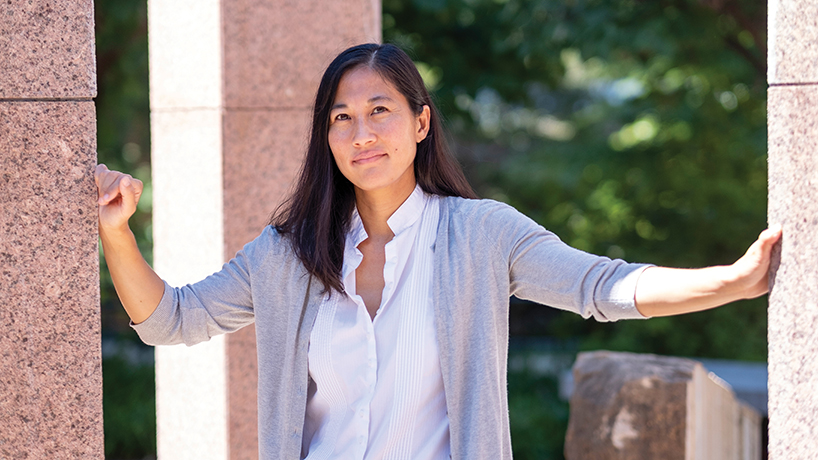
Assistant Professor Marisa Omori had a background in economics when she first got into criminology, and she was interested in examining drug markets and drug crimes. It was hard to ignore the racial disparities present in drug laws and policies. (Photo by August Jennewein)
Marisa Omori, an assistant professor in the Department of Criminology and Criminal Justice at the University of Missouri–St. Louis, examines racial inequality in the criminal justice system. She shared insight during our latest moment of national reckoning.
Why do you think the inequity in criminal justice didn’t gain more widespread attention before the last five or 10 years with the killings of Michael Brown, Freddie Gray, George Floyd and others?
Massive racial inequalities happened as a function of longstanding politics and policies long before that – they are endemic to the United States historically, going back to slavery. If you look at the levels of mass incarceration and mass criminalization specifically, they exploded, starting in the 1970s, in a way that disproportionately impacted people of color. The public is paying attention now because it’s more visible and clashes with a narrative of a post-racial America.
How did you become interested in researching these issues?
My undergraduate background is in economics, and so I was interested in thinking about drug markets, drug use and drug policy. I didn’t come into the field necessarily thinking about racial inequality, but it’s such a central part of drug laws and policies and how they’re created.
Does most of your research still focus on drug crimes?
I’m still doing work on people who are arrested for drug crimes, and I look at how inequalities are generated across different stages of the criminal justice system and how context matters. A lot of times, the biggest inequalities don’t necessarily occur at sentencing, but they occur on the front end. They occur during arrest, the bail process and prosecution and charging. I’ve done work looking at that middle process in the courts and how inequalities happen across multiple stages of the criminal justice system. Most of that is on people who are accused of drug crimes, but that became a way to look at inequality more broadly.
What are some of your current projects?
I am working on a project examining how facial recognition and machine learning contribute to inequalities in criminal justice. That is at the center of the debate for a lot of police departments that are trying to figure out how the technology works. Part of it is the application and where the technology is being deployed. Part of the problem is with the technology itself because a lot of times the algorithms are trained on predominantly white faces and, oftentimes, male faces, so the error rate for misrecognizing Black people, in particular, is much higher. As a result of COVID-19, I’m also working with an interdisciplinary team on the COVID Prison Project, which tracks cases of people in prisons. Coronavirus has disproportionately impacted people in jails and prisons, and so tracking these numbers is important.
This story was originally published in the fall 2020 issue of UMSL Magazine. If you have a story idea for UMSL Magazine, email magazine@umsl.edu.














